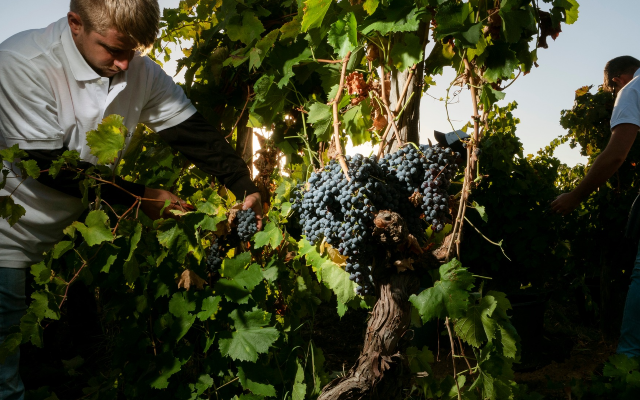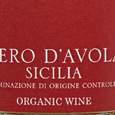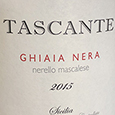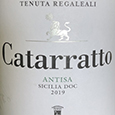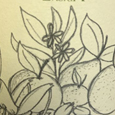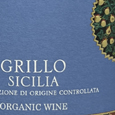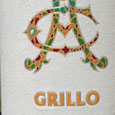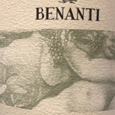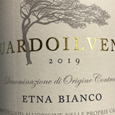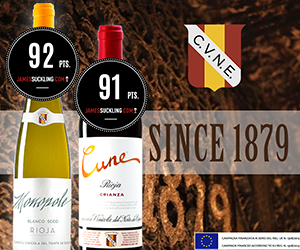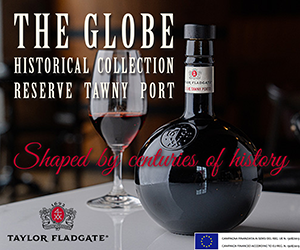A key part of the Sicily story is its indigenous varieties, many of which are distinct to the island.
Red Varieties
Nero d’Avola
The heat-seeking Nero d’Avola thrives across Sicily, and is the island’s most planted red variety. In the past, it was relegated to a minor blending component that would bolster the colour of lacklustre wines across the Mediterranean. That’s changed in a big way. It’s become a powerhouse, both commercially and, in some cases, stylistically.
It’s a difficult grape to generalize. The wines can range from light and juicy to full-bodied and bold. The expressions from Azienda Agricola COS show an elegant side of the grape, with meagre alcohol levels that retain the variety’s floral aromatics and spice. With more ripeness, the wines are led by dark, jammy fruits, with an accent of liquorice. Even in the heat, the wines retain a fresh acidity, with soft, fine tannins that make them approachable in their youth.
Closest comparisons: ripe Gamay or Syrah
Nerello Mascalese
Nerello Mascalese produces some of the most thrilling wines in Sicily, and that has been reflected in its trending popularity. It’s closely associated with Mount Etna, where the grape originates and is most planted. Much like Pinot Noir, it has the ability to uniquely express where it’s grown. Etna Rosso DOC is typically led by Nerello Mascalese, and the wines transport you to the area’s volcanic soils, with an evocative smoky minerality. Nerello Mascalese is also found in the tiny 37-acre Faro DOC, producing wines that are more rustic in character.
The wines are generally higher in alcohol but still with a firm structure and tremendous freshness, showing red fruits and an ethereal floral quality. It’s easy to draw comparisons to Nebbiolo and Sangiovese, and, in fact, Nerello Masclese is closely related to the latter. But Nerello Mascalese is distinctive on its own, as beautifully exemplified by leading producers like Frank Cornelissen and Tenuta Delle Terre Nere.
Closest comparisons: Nebbiolo, Sangiovese, or Pinot Noir
Frappato
The name derives from 'fruitful, and Frappato is exactly that: light, fresh, and juicy, with red fruits that are lifted by floral aromatics. It is commonly blended with Nero d’Avalo, as is the case in Cerasuolo di Vittoria DOCG, though varietal wines can be found in Erice, Sicilia, and Vittoria DOCs.
Closest comparisons: Gamay
Nerello Cappuccio
Nerello Cappuccio falls in the shadows of Nerello Mascalese. The former is more often used as a blending component than a single varietal, contributing colour, soft tannins, and a darker-fruit profile to balance the pale-hued Nerello Mascalese.
Perricone
Most commonly blended with Nero d’Avola, Perricone is rarely bottled as a single varietal, in part because of its characteristic bitterness. Its firm tannic structure balances the softness of Nero d’Avola, while also contributing colour and body with rich spiced fruit.
White Varieties
Catarratto
The dominant grape of Sicily, Catarratto’s colossal acreage has been on the decline, yet it’s undergone a renaissance in recent years. In fact, Sicilia DOC recently approved a name change to Lucido. Traditionally, this high-yielding, neutral variety was used in Marsala or as a blending component in light, inexpensive white wines. It still plays a workhorse role, now in the production of rectified concentrated grape must used to sweeten wines, but there’s also a move towards higher quality single varietal bottlings that are richly textured with a combination of citrus and fresh herbs.
Closest comparisons: Sauvignon Blanc or Viognier
Grillo
Grillo is a Sicilian variety through and through, born on the island as a cross between Catarratto and Zibibbo. Although historically the principal grape in Marsala, it’s firmly established a reputation for excellent dry still wines that are rich, full-bodied, and complex, showing a range of citrus fruits, white flowers, and herbs.
Closest comparisons: Sauvignon Blanc
Inzolia
Also known as Ansonica in Tuscany, Inzolia is a semi-aromatic variety with a long-established history in Sicily. Its success depends on attentive picking decisions. If picked early, it’s capable of producing light, crisp wines that combine bright citrus fruits with fresh herbs and a distinctive nutty quality. Too late, and the variety’s inherently low acidity results in soft, flabby wines.
Closest comparisons: Roussanne
Grecanico Dorato
Grecanico Dorato is best known as Garganega, the grape of Soave in northeast Italy. Yet, it still thrives in the warm climate of Sicily, where it’s been grown for centuries. The wines are typically semi-aromatic and mineral, with a combination of tree fruits, white flowers, and a characteristic almond note.
Closest comparisons: Chardonnay
Zibibbo
Zibibbo is the Sicilian name for the ancient Muscat of Alexandria. It’s most commonly associated with the small island of Pantelleria, sixty kilometres from the coast of Tunisia. Here, it produces exceptional sweet wines from dried grapes, showing ripe apricot fruit with alluring floral aromatics.
Closest comparisons: Muscat
Carricante
Carricante is a racy, high acid white grape largely grown around Mount Etna. It’s the dominant grape variety in Etna Bianco DOC, and may also be varietally labelled under the Sicilia DOC. The wines show the region’s volcanic minerality, with a precise, linear texture that’s marked by bright lemon, delicate spice, and citrus blossoms. Riper examples can also show a honeyed character to the fruit, much like Riesling.
Closest comparisons: Riesling or Chardonnay

European Union Regional Development Fund. Gismondi on Wine held editorial control over the article and autonomy in writing tasting notes.

 quicksearch
quicksearch

